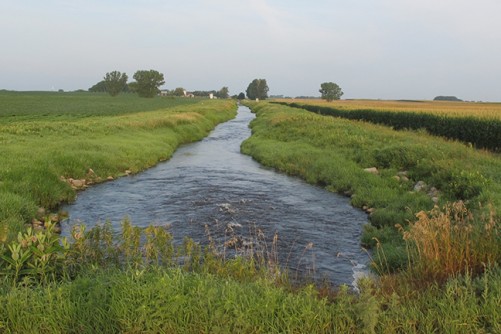Wetlands are five times more efficient at reducing harmful nitrate compared to land-based conservation practices.
February 1, 2018

A study by University of Minnesota researchers provides new insights to demonstrate that multiple wetlands or "wetland complexes" within a watershed are extremely effective at reducing harmful nitrate in rivers and streams.
These wetlands can be up to five times more efficient per unit area at reducing nitrate than the best land-based nitrogen mitigation strategies, the university said.
The research was recently published in the journal Nature Geoscience and was led by researchers from the University of Minnesota College of Science & Engineering’s St. Anthony Falls Laboratory and the College of Biological Sciences.
In agricultural regions like the midwestern U.S., excess nitrate derived from crop fertilizer can make its way to rivers and streams through subsurface drainage systems and agricultural ditches. Once in streams and rivers, high nitrate concentrations can be harmful to ecosystems and human health. This includes impacts such as drinking water contamination and hypoxic zones in the Gulf of Mexico.
Although the topic has been the focus of extensive research, little traction has been made toward effective strategies for nitrate reduction at the landscape scale, the university said.
In this study, researchers used water samples collected over a four-year period from more than 200 waterways within the intensively managed, 17,000-square mile Minnesota River Basin, coupled with geospatial information about land use in the watershed. They were able to isolate the effect of wetlands on stream and river nitrate concentrations within large watersheds.
Significant research findings include:
* When stream flows are high, wetlands are five times more efficient per unit area at reducing nitrate than the best land-based conservation practices. Other common conservation practices are effective at lower flow conditions but overwhelmed during higher stream flows.
* The arrangement of wetlands within a watershed is a key predictor of the magnitude of nitrate reduction. If wetlands intercept 100% of the drainage area, they are three times more effective at nitrate removal compared to interception of 50% of the drainage area.
* Nitrate reduction due to ephemeral (temporary) wetlands, such as riparian floodplains and more geographically isolated wetlands (wetlands not connected to the river network by surface water), was measurable and was highest during high stream flows, when such features are hydrologically connected to surface water.
This last finding is of particular interest to the current policy debate over management and regulations that influence water quality in agricultural regions.
“We value what we can measure, so this is an important step forward in recognizing that as we lose wetlands, we also lose the significant benefits they provide in terms of pollution control,” said Amy Hansen, research associate at the St. Anthony Falls Laboratory and one of the lead authors of the study.
The results of this research not only help advance the science of wetlands and pollution control but also can provide practical applications for practitioners looking to develop guidance on wetland restoration siting and potential benefits, the university added. By being able to target locations on the landscape where wetland restoration would be most effective for nitrate removal, more strategic alliances and funding may become available to make such projects happen.
“The location of the wetlands are important predictors of how effective they are at reducing nitrate,” Hansen said. “Water quality programs that target these locations would be more cost effective as well.”
The full research paper, “Contribution of Wetlands to Nitrate Removal at the Watershed Scale,” can be found on the Nature Geoscience website.
You May Also Like

.png?width=300&auto=webp&quality=80&disable=upscale)

